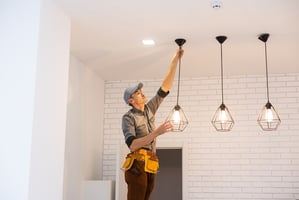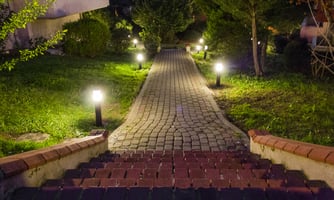Interior Lighting Design is a powerful way to create an environment in your home. Technology has...
Best Lighting for Work and Study at Home
 More than ever before, kids and adults are using the home for both their school and workplace. Even as life goes back to “normal,” many people will continue to spend more time working or taking classes at home. Creating an environment at home that is conducive to remote and online work should include a plan for lighting. Here are some ideas to ensure that you provide the best lighting for working and studying at home.
More than ever before, kids and adults are using the home for both their school and workplace. Even as life goes back to “normal,” many people will continue to spend more time working or taking classes at home. Creating an environment at home that is conducive to remote and online work should include a plan for lighting. Here are some ideas to ensure that you provide the best lighting for working and studying at home.
Type of Light Bulb
First, it is helpful to understand the different light types and how they can impact your eyes, energy levels, learning efficiency, and even appearance. Natural light is considered the best light in most aspects, but you cannot control the sunlight 24/7. There are many different ways to create indoor illumination, but not all are ideal for long hours reading, concentrating, or working on a computer. Finding the right light bulb for the job it needs to do is the first consideration.
Brightness
Dim light is hard on the eyes – it can cause eye strain and impact your cognitive ability when used for long periods. You want bright lighting, but also in a color temperature closer to outdoor light. Brightness is rated in lumens (lm) per watt – for LED lights, about 450 lm in a 6 to 9-watt bulb offers sufficient brightness for most kinds of work and study.
Temperature
For the type of light, you want to consider color temperature, with cooler temps simulating daylight. Daylight, or natural light, is the easiest on eyes for work, study, or screen time. Measured in Kelvin (K) units, cooler “daylight” temps generally range from 5000 to 10,000 K. The ideal color temperature for work-study lighting is a Kelvin rating around 4500-6500, matched with a bulb with the right brightness (lumens or watts). Work-study lighting will differ from what most people prefer when thinking about lighting for ambiance and relaxation. Different rooms or spaces within a room may call for variations in lighting solutions to meet specific purposes and moods.
Types of Lighting Features
The easiest way to adding the correct lighting to a room for work or study is with a desk lamp with the correct light bulb. Finding a desk lamp with a dimming adjustment is ideal for emitting a broader band of light at the right brightness and temperature for the time of day. However, if you want a permanent space for working or studying at home, you may want to consider changing the overhead lighting in areas that will be dedicated as work or study space.
There are a wide variety of options for creating the right lighting for your home office or school space. You can change the bulbs in existing lighting fixtures, but there are some innovative options to upgrade your lighting. Some ideas include:
Wall lighting panels or squares
Control your room lighting’s brightness and temperature by installing flat light panels on a wall, ceiling, or as a backdrop behind your desk. Cutting-edge light squares can be controlled via an app, the ultimate in modern lighting.Ceiling recessed or pendant LED lights
Add a ceiling light to reduce shadows and improve the overall brightness in the room. An LED recessed light or pendant light can add style while providing the right glow in your work or study room.Multiple lamps
If you want to avoid adding a new permanent fixture, add floor lamps or fixed wall lamps with innovative designs to offer more light throughout the room. Keep in mind that dark color shades, or those made of solid material like metal, will direct light up or down, depending on the style of the shade. Light color and translucent shades will diffuse light throughout the room.With new lighting, your study or home office can help you be more productive. If you need lighting design consultation, electrical installation of new fixtures, or added outlets in your home’s work or study area in the Washington, DC area, contact us at Wilcox Electric - we are your source for home electrical improvements.



